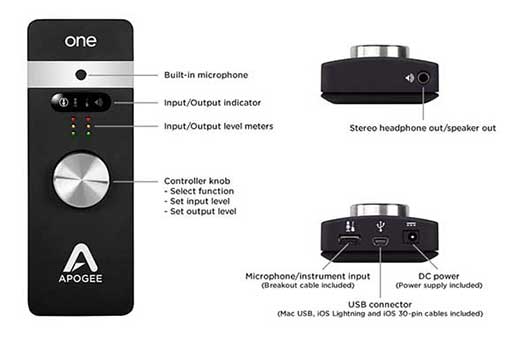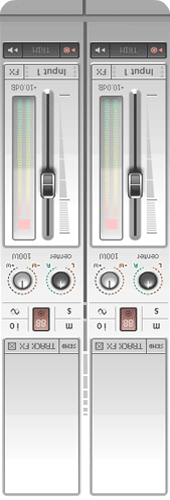Apogee One Audio Interface
After the long wait for a portable, thunderbolt audio interface, I was thrilled to hear of the Zoom TAC2 being released. My mactop hasn't seen much use of the thunderbolt port, except for a few external monitoring setups. The only other option, was UA's Apollo Twin and while UA is a more professional name in audio, I found it to be far heavier and quite a bit more expensive. I'm all about portability with my setup, so I purchased the Zoom TAC2. After it arrived, I soon learned that the Zoom TAC2 firmware was not compliant with my ancient, but stable OSX 10.6.8
I didn't feel the need to upgrade my OS, and Pro Tools, just to try this thing out. Luckily, I bought the Zoom TAC2 from Amazon and did the instant refund. The next step was obvious... Get the Apogee One. Luckily, I bought the 2nd version which is an improvement on the first model with iPad compatibility ,etc. This thing has been around long enough to go through a few firmware updates. Luckily, they had a special driver just for 10.6.8. I was impressed enough to actually write a review - It's certainly the best portable audio interface I've seen in a while.
 The first thing I noticed about the Apogee One, was it's solid build and easy setup. It comes with a plethora of cables for everything from iPhones to iPads, break out cables (for the quarter inch and XLR input) and of course the AC adapter. It also can be powered via 2 AA batteries. Let me state, once again, that the firmware for the Apogee One came together with zero hiccups. I love how it slaves the mac volume and consolidates everything. So, turning the big knob on the Apogee One is the same as adjusting the mac volume on the keyboard. This integration is flawless and really helps those of us going back and forth from Pro Tools to Chrome to VLC, etc. Gosh, being able to reference levels so easily really helps us audio composers and music designers perform their jobs. The Apogee One is perfectly suited to mixing on headphones due to their portability and high resolution.
The first thing I noticed about the Apogee One, was it's solid build and easy setup. It comes with a plethora of cables for everything from iPhones to iPads, break out cables (for the quarter inch and XLR input) and of course the AC adapter. It also can be powered via 2 AA batteries. Let me state, once again, that the firmware for the Apogee One came together with zero hiccups. I love how it slaves the mac volume and consolidates everything. So, turning the big knob on the Apogee One is the same as adjusting the mac volume on the keyboard. This integration is flawless and really helps those of us going back and forth from Pro Tools to Chrome to VLC, etc. Gosh, being able to reference levels so easily really helps us audio composers and music designers perform their jobs. The Apogee One is perfectly suited to mixing on headphones due to their portability and high resolution.
The quarter inch / XLR breakout cable was immediately put to use. I plugged in my trusty Jackson Flying V and a Shure Beta 58. Setting input levels was incredibly easy – push in the volume button to select input, then turn the wheel. In less than a minute, I had decent levels for my electric wailings. My musical mate, Simplocity, lent some mic check skills and began to rap into the Beta 58. Between that and my guitar playing, it soon turned into a wall of noise that would make a zombie baby squirm. Anyway, the Apogee One kind of disappeared into the session with a smooth transparency. After years of troubleshooting Mbox units, this was a pleasant surprise. Oh, did I mention the Apogee One also has a built in mic? I love that and will have to test it soon. Overall, this thing is the top choice for the traveling game audio minstrel.
I have not found one single negative thing to say about the unit. If this changes, I will update the page!
--------







